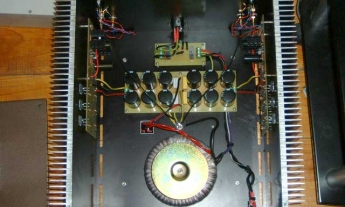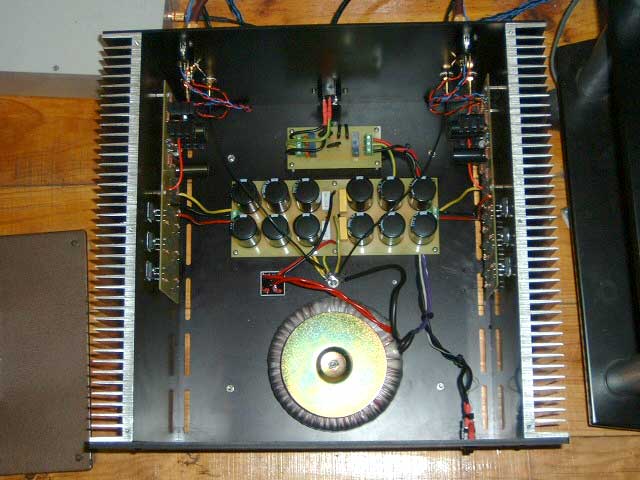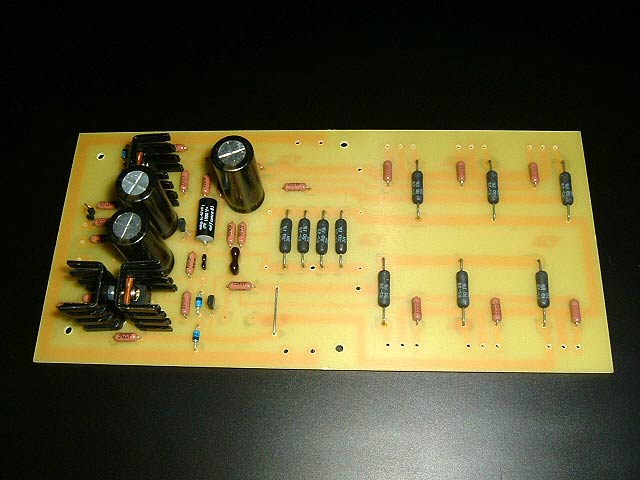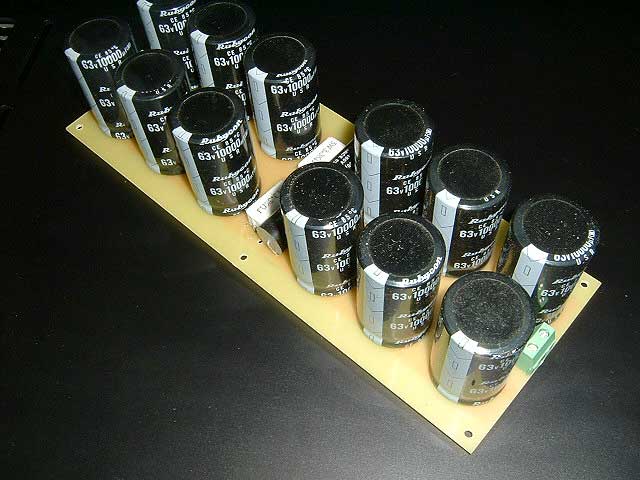Miscellaneous Projects
I have just completed two Amplifier amplifiers. One is an Amplifier 5 that I built for my brother to use with his Apogee Centaurus ribbon hybrid loudspeakers. The other is an A4 that I built for a friend. I have completed them in about six months and am very pleased with the results of my labour, but more on that later.
I used IRFP250 Mosfets because that is what I could easily find locally. Both amplifiers use six Mosfets per channel. The bias resistors for the A4 are 0R68 as suggested by Mark Finnis on his website. The capacitors on the amplifier boards are Nichicon Muse 220uF, Silver Mica 680pF and 10pF and Solen 0.047uF. Resistors are Dale ¼ W 1% and 3W 1%. For the power supplies I used 12 x 10 000uF 63V Rubycon Electrolytics per amplifier bypassed with 3.3uF polypropylene caps. I used Keystone CL-60 thermistors for inrush protection and CL-40 thermistors on the ground lines.
The Amplifier 5 has a single 650VA 28V-0-28V toroidal transformer while the A4 has a single 650VA 38V-0-38V transformer.
I used Michael Finnis' A4 PCB design as starting point for my PCB design. I changed the board to accommodate heat sinks on the input Fets and to allow the mounting of the Mosfets without any additional wiring. I also designed a board for the power supply and what I call the voltage input boards on which the thermistors and 250V AC capacitors are mounted.
All internal wiring is either Kimber or DH Lab and connectors are Cardas RCA's, Neutrik XLR sockets and Vampire speaker binding posts.
The heat sinks are from Fischer and measure 40mm H x 250mm L x 400mm W. They have a C'/W rating of about 0.22 each. The chassis consist of laser cut 3mm black Anodised Aluminium top, bottom and rear panels and 6mm front panel, all bolted onto the heat sinks with Allen head bolts.
Both amplifiers worked when first switched on and I am absolutely delighted with the sound quality. I have listened to a number of big-ticket amplifiers, but I can honestly say that the Amplifier designs have the best reproduction of vocals that I have ever experienced. The timbre of vocals and natural instruments are unmatched by any other amplifier that I have heard. Sound staging and transparency is beyond reproach. If I have any, very minor, criticism of the sound it would be that I have heard tighter bass on some of the more powerful high current designs available. They cannot, however match the natural timbre as reproduced by the Amplifiers.
I would like to thank you for sharing your exceptional designs with the audio DIY community and wish you every success in future.
Regards
Dirk de Villiers










